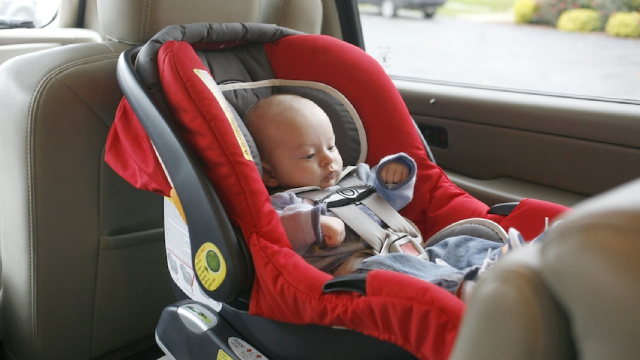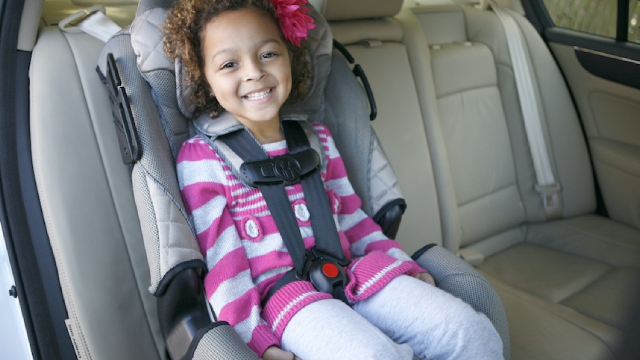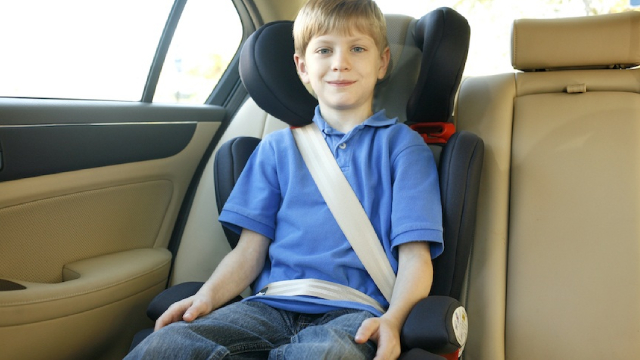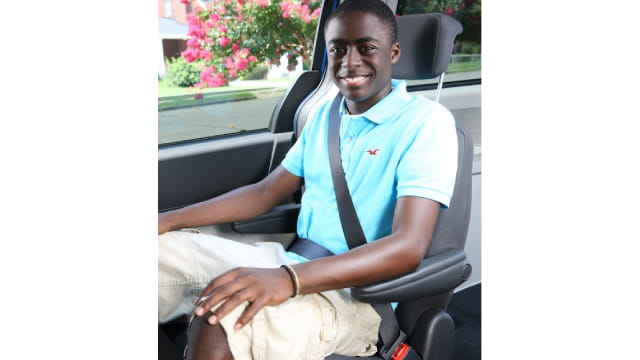Keeping Kids Safe
Pediatric Emergency & Trauma Care
Contact Us
(321) 841-5437Drowning Prevention in Children
Playing in the water is fun for children of all ages — and with Florida’s year-round warm weather, it is a favorite activity in the sunshine state. At Orlando Health Arnold Palmer Hospital for Children, we want children to be safe when enjoying Florida’s many water activities.
Free Swim Lessons Available (must qualify):
Free Door Alarms (must qualify):
- Kids can drown in as little as on 1 inch of water.
- Drowning is the leading cause of death in children ages 1 to 4.
- Swimming pools are the most common site of accidental drowning.
- In 83 percent of drowning incidents, the child was estimated to be missing for 11-12 minutes.
- The incidence of drowning in natural water settings increases with age. Of kids older than 15 years-old, 57 percent of drownings occurred in lakes, oceans or rivers.
- In 2017, the U.S. Coast Guard reported 2,629 injuries and 658 deaths due to boating incidents.
- Nearly 9 out of 10 drowning victims were not wearing life jackets.
- Thankfully, many drowning accidents can be prevented, and parents and caregivers can play a key role in protecting children. By taking safety precautions such as those listed below, whether you’re at home or out to play, you can help to keep your child safe around water.
It’s important to have multiple layers of protection in place to prevent an accidental drowning.
Layer 1: Supervision
Supervision, the first and most crucial layer of protection. It means someone is always actively watching when a child is in the pool, tub or natural body of water. For young children, the supervisor should be within range of touch at all times.
Layer 2: Barriers
A child should never be able to enter the pool area unaccompanied by a guardian. Barriers physically block a child from getting in the water. Barriers may include child-proof locks on all doors leading to the pool, a pool fence with self-latching and self-closing gates, and door and pool alarms. Professional pool covers fitted to your pool may also be used. A simple canvas covering can be a drowning hazard and entrap a child in the water.
Layer 3: Emergency Preparedness
From the moment a child stops breathing there is a small, precious window of time in which resuscitation may occur. But only if you know what to do. Administering CPR can mean the difference between life and death. In an emergency, it is critical to have a phone nearby and immediately call 911.
- Install a four-sided fence that completely separates the house from the pool area.
- Consider an alarm system to alert you if someone enters the pool area.
- Keep pools free of floats and balls that might tempt children to enter the pool unsupervised.
- Always designate a responsible adult as “water watcher,” as many drownings occur because it is assumed someone else is watching children in the pool.
- If a child is “missing” — always check the pool first. Scan the entire bottom and surface as well as the surrounding area.
- Above ground pools should have a fence around the pool or around the access point, such as the ladder or stairs.
- Hard covers should be on hot tubs at all times when not in use.
The Residential Swimming Pool Safety Act (Chapter 515, Florida Statutes) requires one of the following pool safety measures be in place for pools built after October 1, 2000:
- A pool fence with self-closing, self-latching gate – enclosing the pool and providing no direct access to it.
- An approved pool cover.
- Alarms on all doors and windows leading out to the pool.
- All doors providing direct access from the home to pool have a self-closing, self-latching device with a release mechanism no lower than 54 inches above the floor.
The Florida Department of Health recommends using a combination of barriers to help ensure your pool is equipped with approved safety features.
- Swim in supervised areas only.
- Always enter the water “feet first” and look before jumping to be sure no one is in the way.
- Obey posted warning flags, and stay away from piers, pilings and jetties.
- Keep a lookout for and avoid aquatic life.
- Wear a U.S. Coast Guard-approved life jacket:
- Type I: Offshore Life Jacket – Designed for open ocean, rough waters or remote areas. They turn most unconscious wearers to a vertical position.
- Type II: Near Shore Life Jacket – Designed for inland waters. They may turn most unconscious wearers to a vertical position. They are less buoyant than Type I, but are more comfortable to wear.
- Type III: Flotation Aids – Designed for calm inland waters or for the specialized sport that is marked on the device. Type III is more comfortable for active water sports than Types I and II.
- Type IV: Throwable Devices – Designed to be thrown to a victim in an emergency. They are not intended to take the place of wearing a life jacket.
- Do not ride in a boat – or let children ride in a boat – operated by someone who has been drinking alcohol.
- Attend a boating course with the family (some examples include Red Cross, U.S. Coast Guard, US Sailing) to learn navigation rules and emergency procedures.
- Empty all tubs, buckets, containers and kiddie pools immediately after use and store them upside down to prevent the collection of water
- Close toilet lids and use seat locks to prevent kids from falling in head first.
- Ensure there are no covered or uncovered holes around the house collecting water.
Fall Prevention in Children
Falls are a normal part of your child’s development. As children begin to explore their environment – and crawling and walking soon advance to climbing, running and jumping – it’s no wonder that falls are a common part of childhood. Though most falls result in a few bumps, scrapes and bruises, some falls can cause serious injuries that need immediate medical attention.
- Each year, about 2.8 million children visit an emergency department for injuries from a fall.
- Falls are the leading cause of traumatic brain injury, especially among young children.
- Falls account for over 50 percent of nonfatal injuries in children less than 1 year old.
- More than 80 percent of fall injuries occur at home.
- The risk for a fall-related injury at home is double that at a childcare facility.
- Every year, over 3,000 children younger than 5 suffer injuries due to a fall from a window.
- More than 200,000 children aged 14 and younger are treated in emergency departments every year for playground-related injuries. Of these, over 20,000 suffer traumatic brain injuries.
- Child’s physical development, such as learning to walk
- Products, such as baby carriers, high chairs and changing tables, not meeting or used according to consumer recommendations
- Poorly maintained playground equipment or inappropriate surfacing
- Hazardous environments
- Inadequate supervision
- Playing at heights, such as stairs, balconies and age-inappropriate playground equipment
- Unsecured furniture
Thankfully, many falls can be prevented, and parents and caregivers can play a key role in protecting children. By taking safety precautions such as those listed below, whether you’re at home or out to play, you can help to prevent your busy, active child from taking a dangerous tumble. And remember, supervision, especially for young children, is key.
- Properly install window guards.
- Keep windows locked and closed when not in use.
- If your windows open from top and bottom, only open from the top.
- Keep furniture away from windows.
- Visit playgrounds with shock-absorbing surfaces, such as rubber or sand, that provide for a more cushioned landing than grass or concrete.
- Read playground signs and use age-appropriate equipment for your child.
- Be aware of other fall risks in play area, such as rocks or tree roots.
- Contact the organization responsible for playground to address safety hazards.
- Use approved safety gates at tops and bottoms of stairs for babies and small children.
- Read the manufacturer’s instructions and warning labels. Not all gates are safe for use at the top of stairs.
- Hold your child’s hand when going up and down stairs.
- Use mounts, brackets, braces, anchors or wall straps to secure furniture and televisions.
- Never let your child climb on furniture or use drawers or shelves as steps.
- Ensure that walkway areas are clutter-free and well-lit.
- Make sure babies and young children are strapped in to high chairs, infant carriers, swings and strollers.
- If your baby is in a carrier, never place carrier on top of a table or other furniture. Rather, place carrier on the floor.
- Be cautious when your child is learning to walk. Stay close by and keep them away from stairs, hot appliances or cords.
- Use nonslip rugs, and mats or decals in the bathtub.
- Avoid play on high porches, decks, stairs and balconies.
- Always secure your child with harness or safety belt in a shopping cart and never leave child unattended.
- Talk to your child about expected and safe behaviors.
- Make sure your child is wearing a properly sized helmet when participating in activities such as biking, skateboarding, rollerblading, etc.
- Make sure your child wears appropriate protective gear for sports and play, including wrist guards, knee and elbow pads, and a helmet.
Burn Prevention in Children
Keeping kids safe includes preventing burns. This can mean keeping young children out of the kitchen when cooking, placing pots and pans on back burners with handles turned inward and keeping hot beverage mugs out of the reach of toddlers. But some of the most serious and most common dangers lurk in not-so-obvious situations.
- Keep devices with button batteries (i.e., car keys, remote controls, electric candles, singing books) away from children. Saliva can trigger an electrical current which can burn the esophagus.
- If batteries or chemicals are swallowed, go to the emergency room immediately for treatment. Do not allow your child to eat or drink and do not try to induce vomiting.
- Create a kid-free zone while cooking. If babies are present, place them in a highchair outside the kid-free zone.
- Use back burners of stove and turn handles away from the edge to prevent children from pulling contents onto themselves.
- Allow microwaved foods to sit for at least three minutes before touching.
- Avoid using microwaves to heat baby milk or formula to prevent dangerous hot spots. Always check milk temperature by using the inside of your wrist.
- For safety, warm milk by immersing bottle in warm water. Check that milk has cooled before feeding baby.
- Ashes and coals from a fire can stay hot for three days after the fire is out.
- Install a safety gate or screen around fire. Teach kids to avoid the glass around fireplace as glass can stay hot for up to an hour after fire is out.
- Make sure there are working smoke alarms throughout the home.
- Create and practice a home fire escape plan, including at least two ways out of every room. Designate a meeting place outside the home at a safe distance.
- Never carry hot drinks while children are playing underfoot or while holding a child.
- Avoid placing hot beverage cups on strollers.
- Use caution with hot beverages without lids to prevent injury from curious children reaching for the cup.
- Visit playgrounds with shock-absorbing surfaces, such as rubber or sand, that provide for a more cushioned landing than grass or concrete.
- Read playground signs and use age-appropriate equipment for your child.
- Be aware of other fall risks in play area, such as rocks or tree roots.
- Contact the organization responsible for playground to address safety hazards.
- Use approved safety gates at tops and bottoms of stairs for babies and small children.
- Read the manufacturer’s instructions and warning labels. Not all gates are safe for use at the top of stairs.
- Hold your child’s hand when going up and down stairs.
- Set household water heater below 120̊ F. Bath water should not be hotter than 100̊ F.
- Test water with your wrist or elbow before placing child in tub.
- Teach kids to turn on cold water first, before hot.
Basic Car Seat Safety
Three out of four car seats are used incorrectly. Is yours? Below are tips on how to properly install and use your child’s car seat, including safety belt tips for older passengers.
Children should ride rear-facing as long as possible, up to the limits of their car seat. Rear-facing protects the most fragile parts of a young child’s developing body in a collision: their head, neck and spine.
Proper Use
- Child is within weight and height limits of the car seat
- Head is contained within the shell of the car seat
- Installed in the vehicle properly, utilizing safety belt or LATCH system
Proper Installation
- Safety belt or LATCH system routed through correct belt path
- Correct recline angle
- Car seat does not move more than 1 inch side-to-side or front-to-back
Proper Harnessing
- Harness straps are at or below shoulders
- Harness is snug, cannot pinch any webbing at the shoulders
- Chest clip is at armpit level
Children who have outgrown the rear-facing weight or height limit for their car seat should use a forward-facing seat with a harness for as long as possible, up to the limits of the car seat.
Proper Use
- Child is within weight and height limits of the car seat
- Top of ears are contained within the shell of the car seat
- Installed in the vehicle utilizing safety belt and tether or LATCH system properly
Proper Installation
- Safety belt or LATCH system routed through correct belt path
- Tether attached correctly
- Car seat does not move more than 1 inch side-to-side or front-to-back
Proper Harnessing
- Harness straps are at or above shoulders
- Harness is snug
- Chest clip at armpit level
All children whose weight or height exceeds the forward-facing limit for their car seat and are developmentally mature should use a booster seat until the vehicle safety belt fits them properly.
Proper Use
- Child is within weight and height limits of the booster seat
- High-back boosters should be used in vehicles without headrests or with low seat backs
- Shoulder belt positioner is used
Proper Harnessing
- Shoulder belt rests across the chest, not the neck or face
- Lap belt lies snugly across the child’s upper thighs, not across the stomach
When children are old enough for the vehicle safety belt to fit them correctly, they should use lap and shoulder safety belts for the best protection. All children under 13 should ride in the back seat.
- Your child is tall enough to sit against the vehicle seat back with knees bent over the edge of the seat without slouching. He or she can comfortably stay in this position throughout the trip
- Feet can touch the floor
- The shoulder belt lays across the middle of the chest and shoulder, not the neck or throat
- The lap belt is low and snug across the upper thighs, not the stomach
Teen Driver/Passenger Safety
The early years of driving are crucial for developing safe driving habits. Motor vehicle crashes are a leading cause of death among teens, with major contributing factors including alcohol use, inconsistent safety belt use, speeding and distracted driving. Teen drivers and their passengers can reduce these risks by minimizing distractions, following traffic laws and always wearing a safety belt.
- Wear your safety belt every time and make sure your passengers do, too.
- Keep your eyes on the road, hands on the wheel and your mind on the task of driving.
- Follow the posted speed limit; give yourself enough time so you do not feel the need to rush.
- Limit the number of passengers as they can be a distraction.
- Do not drive impaired. It can affect your reaction time and/or the decisions you make behind the wheel.
- Be courteous on the road. Driving is not a competitive event.
- Wear your safety belt every time.
- Prevent distractions for the driver. Passengers can be an extra set of eyes in the car and an extra pair of hands to handle distracting tasks like cellphone use, changing the radio station, adjusting GPS, etc.
- Do not get in a car with any driver who is impaired due to alcohol or any other substance.
- Create a code word with your parents/caregivers so they can pick you up and get you out of an unsafe situation.
- Speak up if you feel the driver is distracted or is doing something dangerous.
- Safety belts must be worn properly for them to protect you. Safety belts work with the airbag to protect you.
- The shoulder belt should lie across the middle of the chest and shoulder, not across the neck or throat.
- The lap belt should be low and snug across the upper thighs, not across the stomach.
- Two-thirds of teens that die in crashes are not wearing their safety belt.
- When a car crashes, it stops very abruptly. Occupants continue to travel until something inside of the car stops them.
- An unrestrained occupant continues to travel forward until rapidly striking the steering column, windshield or other part of the vehicle, which causes injury.
- In a crash, wearing a safety belt helps the body slow down along with the car, for a more gradual stop. The more gradually the body slows down, the lower the likelihood of a serious injury.
Florida Teen Driver Curfew
- Learner’s License - Ages 15+
- Curfew restrictions apply to all ages who hold a learner’s license credential — even 18 or older.
- The minimum age requirement for a Learner’s License is 15.
- A driver must always have a licensed driver 21 or older in the front passenger seat.
- For the first 3 months, driving is limited to daylight hours only.
- After the first 3 months, driving is permitted until 10:00 pm.
- Driver’s License
- Curfew restrictions apply unless driving to or from work or accompanied by a licensed driver 21 or older.
- Age 16: Driving is allowed from 6:00 am to 11:00 pm.
- Age 17: Driving is allowed from 5:00 am to 1:00 am.










